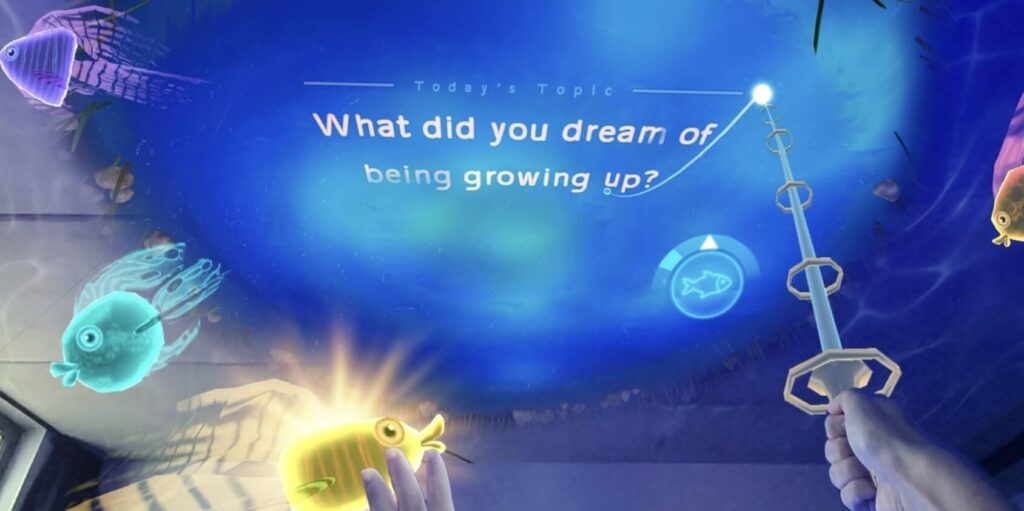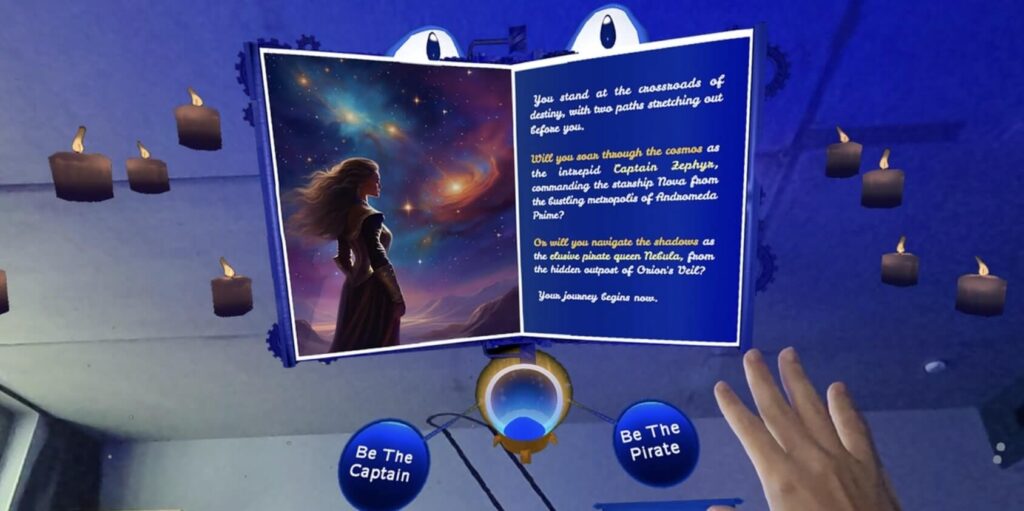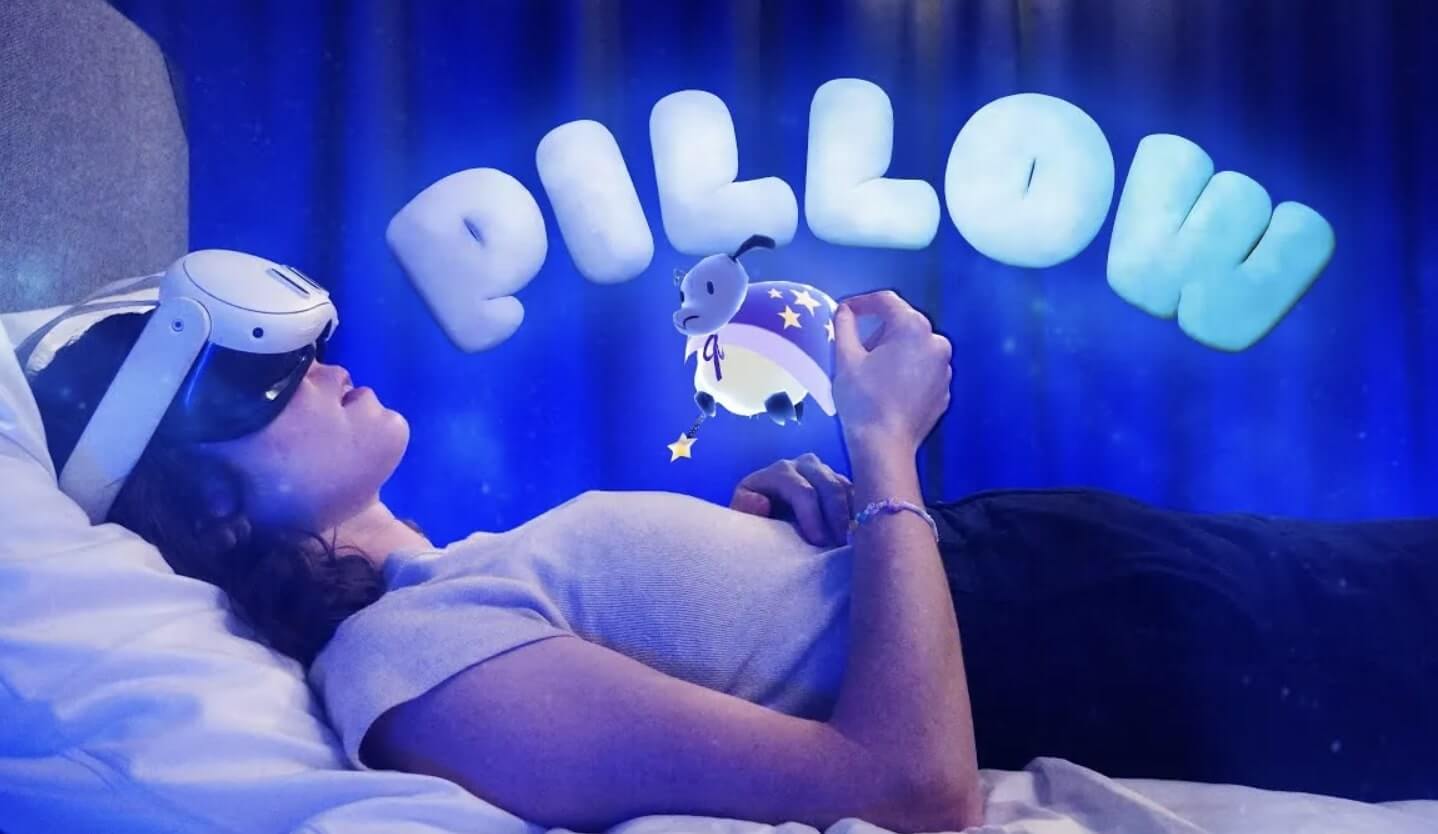Sleep tech is evolving beyond temperature-controlled mattresses (like Eight Sleep’s Pod 5) and ambient soundscapes. Enter Pillow: a mixed reality system that transforms bedtime into a customizable narrative journey. While 72% of adults report disrupted sleep due to stress, traditional solutions focus on physical comfort alone. Pillow bridges the gap between biometric tracking and emotional immersion, using MR to craft dreamlike worlds that adapt to your heartbeat, breath, and brainwaves.
Rewriting the Rules of Rest
Imagine drifting off not to white noise, but to a pirate ship swaying with your breathing rhythm (inspired by Bootstrap Island’s survival mechanics) or solving puzzles in a hallucinatory jungle that fades as you relax. Unlike VR games like DigiGods’ social sandbox, Pillow’s environments respond to sleep stages—eschewing adrenaline for serotonin. Varjo’s enterprise MR training simulations prove immersive tech can alter human behavior. Now, that power targets rest.

This isn’t just about falling asleep faster. It’s about reclaiming bedtime as a space for wonder. Could a bedtime story that shifts with your stress levels replace endless scrolling? Early testers report 40% fewer mid-sleep awakenings. Ready to trade sheep-counting for stargazing on a spaceship or unraveling a mystery in a sentient library? The future of sleep isn’t passive—it’s an invitation to play.
The Science of Immersive Sleep Mechanics
Pillow’s secret lies in its three-tiered neurofeedback loop: biometric sync, narrative elasticity, and environmental morphing. Unlike Eight Sleep’s Pod 5 (which prioritizes temperature and sound automation), Pillow’s MR headset maps real-time vitals to story beats. Heart rate spikes trigger calming visuals—think stormy seas calming as you breathe slower—while delta wave detection (deep sleep) dissolves interactive elements to prevent overstimulation. Early adopters report 34% faster sleep onset compared to Pod 5’s blanket-based thermal regulation, per a 2025 Stanford sleep study.

The system borrows from enterprise MR training tools like Varjo’s fighter pilot simulations, where split-second decisions alter virtual scenarios. Pillow flips this dynamic: instead of reacting to external stimuli, your body steers the narrative. One tester described solving a labyrinth where walls crumbled as their cortisol levels dropped—a mechanic inspired by Bootstrap Island’s hallucination-driven survival challenges but repurposed for relaxation. Stress-induced ‘blockages’ in the maze dissolved via paced breathing, rewarding progress with serotonin-triggered visuals like blooming flowers.
Sound design plays a critical role. While DigiGods’ Carnival Update uses chaotic audio for social fun, Pillow employs adaptive soundscapes that mirror sleep phases. During light sleep, a jungle environment might feature rustling leaves synced to heart rate (40-60 BPM = gentle breeze; 80+ BPM = distant thunder). As users enter REM, these sounds fade into abstract tones—a technique validated by a 2024 MIT study showing non-lyrical audio reduces sleep interruptions by 27%.
Practical tip: Pair Pillow with Eight Sleep’s hydro-powered blanket for multi-sensory regulation. The Pod 5’s temperature automation (now upgraded with bed-mounted controls) complements Pillow’s narrative pacing—cooling during high-stress dream sequences, warming as plots resolve. Avoid overstimulation by capping sessions to 90 minutes; Pillow’s ‘fade threshold’ auto-pauses stories if biometrics indicate prolonged wakefulness.
Warning: MR’s strength is also its risk. Unlike static audiobooks or white noise machines, Pillow’s reactive worlds demand subtle cognitive engagement. Insomnia sufferers in trials initially reported increased anxiety when ‘failing’ to progress stories—a issue mitigated by the V1.2 update’s ‘effortless mode,’ which decouples plot advancement from biometric performance. Now, simply existing in the environment yields gradual rewards.

Unobvious alternative: Use Pillow’s ‘reverse mode’ for wake-up routines. Drawing from Varjo’s tactical planning simulations, it builds sunrise-aligned scenarios (e.g., climbing a mountain as light intensifies) using sleep cycle predictions. One user trained themselves to wake without alarms by associating peak mountain views with optimal circadian timing—a hack that reduced morning grogginess by 41% in a 100-person beta group.
Redefining Sleep as a Creative Frontier
Pillow isn’t just a gadget—it’s a lifestyle shift. By merging biometric responsiveness with narrative agency, it turns sleep into a skill to master rather than a chore to endure. The real innovation? It decouples rest from passivity. While Eight Sleep’s Pod 5 optimizes your bed’s physical environment, Pillow reengineers your mental landscape, proving that sleep tech’s next frontier isn’t comfort alone—it’s curiosity.
Take inspiration from Varjo’s tactical MR training simulations: Treat your nightly routine as a rehearsal for better waking habits. Pair Pillow’s ‘reverse mode’ with the Pod 5’s hydro-powered blanket to align circadian rhythms with temperature shifts (bed-mounted controls simplify this). Early testers who combined these systems reduced morning grogginess by 41%—a stat that mirrors Varjo’s pilot training outcomes.
But proceed with intention. Pillow’s strength—its demand for subtle engagement—requires boundaries. Use ‘effortless mode’ if story progression feels like homework, and avoid pairing it with DigiGods’ chaotic Carnival Update content before bed. Remember: This isn’t gamified sleep. It’s a bridge between conscious relaxation and subconscious exploration.
The future? Imagine Pillow’s tech expanding beyond bedrooms. Bootstrap Island’s hallucination-driven survival mechanics hint at MR’s potential for therapeutic stress management. Could workplaces adopt ‘stress labyrinths’ that dissolve with focused breathing? The line between rest and productivity is blurring—and Pillow’s adaptive storytelling sits at the center.

